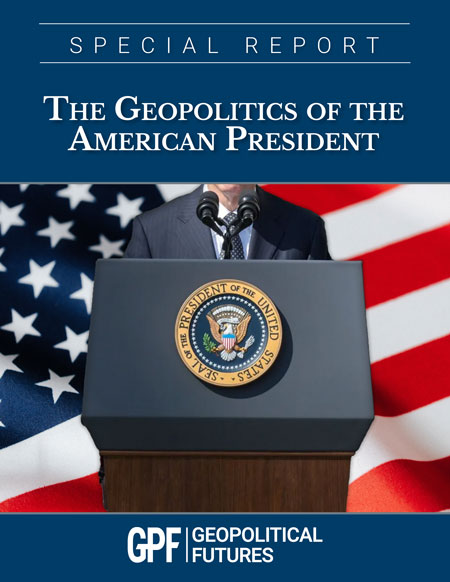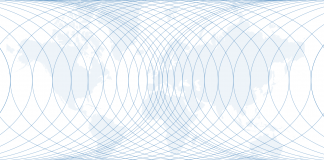The COVID-19 disease, which seems likely to be with us for a long time, has done its part to define history. But it has not suspended history. Though there is much we still don’t know about the disease, we do know that all nations have been affected by it. The death toll is significant but does not threaten to annihilate populations as other diseases have. It has, however, inflicted damage on economies that will take years to repair. Either science will defeat it or the world will adjust to living with it. But that branch in the logic will not come for a while.
Since nations continue to exist, the distrust between them remains – in many cases, it has intensified. As things evolve, the relationships between nations will return to their traditional role. As there is little more to be said for now about the virus that has not been said already, we need to return to the consideration of geopolitics, which like diseases can cause massive casualties. Were this the bubonic plague, we would be returning to the relationship between Rome and Florence. Today we will return to the relationship between the U.S. and China.
When we last visited these two nations, the United States had placed tariffs on some Chinese exports to the U.S., hurting and angering China and leaving it no effective counter. The Chinese built their economy the same way the United States had between 1890 and 1929: by exporting cheap manufactured goods and agricultural products. The international system needs cheap products, and the exporter must export to increase domestic prosperity and create a self-sustaining society. The advantage of an exporter is it makes money. The disadvantage is it depends on the willingness and ability of its customers to buy. So when, for example, the post-World War I depressions took hold of Europe, Europe’s ability to buy U.S. products became a major cause of the Great Depression.
China suffered a blow in 2008, when the global recession following the subprime loan crisis cut into China’s exports dramatically. More recently, tariffs imposed by the U.S. threatened to create a massive imbalance in the Chinese economy. Chinese industry vastly outgrew domestic Chinese demand, producing more than Chinese consumers could buy. The U.S. move was designed to destabilize China, which had been emerging as a major power suffering a major vulnerability. The U.S. took advantage of it.
At roughly the same time, it was revealed that the Chinese were operating concentration camps of sorts for Uighurs, Turkic Muslim minority populations in far western Xinjiang province, as demonstrations and riots broke out in Hong Kong. Try as it might, China’s excellent propaganda had a harder time convincing the world that it was passing the U.S. as a great power. China’s gross domestic product was about $14 trillion and the United States’ was just under $22 trillion, and China has many more people. The U.S. military is able to operate globally. The Chinese are trying to find a lever in the South China Sea. Propaganda aside, China was to the U.S. what the U.S. was to Britain in 1900. Looked at from that point of view, the U.S. could be ambitious but had to be cautious. Britain could be contemptuous at its own risk.
China is not in any way the equal of the U.S., either economically or militarily. Propaganda is not trivial but it can not be decisive. Or more precisely, it could not be decisive yet. Britain in 1900 was celebrating its very real glory. By the 1920s, it was defaulting on its vast debt to the United States, in the midst of economic agony, struggling to hold its position in Europe, fearing reasonably that its empire was in danger.
There are of course many differences between the three countries, but the core dynamic had similarities. One of these similarities is that British investment in the United States was a centerpiece of both nations’ economic strategies. British capital was critical to U.S. industrialization and to ranches in the West. Similarly, U.S. investment in China was critical to China’s industrial development, as was the import of Chinese goods. The United States and China were linked economically as were the U.S. and Britain. And we should remember that when Britain fought in World War II to save its empire, it was the United States that compelled the British to follow a military strategy that made its loss of empire inevitable. Winston Churchill accused Franklin Roosevelt of trying to destroy the British Empire. Roosevelt was shocked and offended by the charge.
China remains inferior to the U.S. in all measures, but it has risen to the point where the U.S. can no longer accept China’s military ambitions nor finance the Chinese economy. China wants badly to resume the economic relationship it had with the United States, while having the U.S. accept its need to dominate first the South and East China seas and then the Pacific, while also projecting economic power and later military power globally. The United States is dominant in North America. It fought for control of the Pacific and the Atlantic in World War II. From China’s point of view, the geography of the Western Pacific and the ability of the U.S. to blockade China is an existential threat.
China has little appetite for risk. Starting a war carries with it the chance of losing. Nor can China trust the U.S. So it is laying the groundwork for an opportunity or an aggressive decision by the United States. Facing historically hostile enemies like Japan and South Korea and, more recently, Taiwan and Indonesia, the Chinese lack a meaningful alliance structure. North Korea is a useful but dangerous tool with which to goad the United States. Other than that, it has a strategy of making random investments around the world to demonstrate its growing power. As propaganda, it works. The use of investments in, say, Serbia is less clear strategically.
China therefore has three core strategic problems. Challenging the U.S. for command of the sea is a dangerous game. While countries such as Russia might fear the U.S. as much as China does, geography prevents cooperation, so China lacks a meaningful alliance structure. Finally, China’s main adversary, the U.S., is also indispensable for the Chinese economy.
China’s solution to this dilemma, bravado aside, is twofold. The first is to hope that the U.S. gets involved in a war like World War I, as Britain did. The other is to confront the U.S. in another domain: space. Success in the latter might create an opportunity for the former. Thus for China, space and missiles provide a military option but don’t solve the economic problem.
The U.S. is obviously aware of the military challenge. It has announced a massive withdrawal of forces from the Middle East to devote more time and attention to Russia and China. Patriot missiles have been removed from Saudi Arabia and bases in Iraq have closed. At the same time, the U.S. has withdrawn B-52s from Guam, indicating it is focusing on a space-based missile option against China. But in the end, both nations are in deterrence mode. Neither can afford losing a war against the other.
The major U.S. weapon against China is economic. Here the virus opens opportunities. The U.S. is dependent on China for vast amounts of products, a supply chain that gave the U.S. the benefit of low-cost manufacturing, and the Chinese an industrial base. The Chinese move is to expel and block the U.S. supply chain, but Beijing can’t do it while also maintaining social stability. And the U.S. has options to replace the Chinese supply chain.
The solution on both sides is to hurl insults. The Americans hint that the Chinese are responsible for the coronavirus. The Chinese have a global effort to show that the virus has crippled the United States permanently and that China is now the leading power. Propaganda wars may be fun to watch, and hurling insults should perhaps be an Olympic sport, but power is not a matter of perception, at least not when bombs start landing and bankruptcies mount. The U.S. will continue to hurl insults while undermining the Chinese by shifting the supply chain. China will continue seeking a military advantage.
China and the U.S. have been hammered by the virus. The hopes, imperatives and constraints of both countries relative to each other have been bent but not broken by the epidemic. As it was before so it will be in the future.





 The Geopolitics of the American President
The Geopolitics of the American President